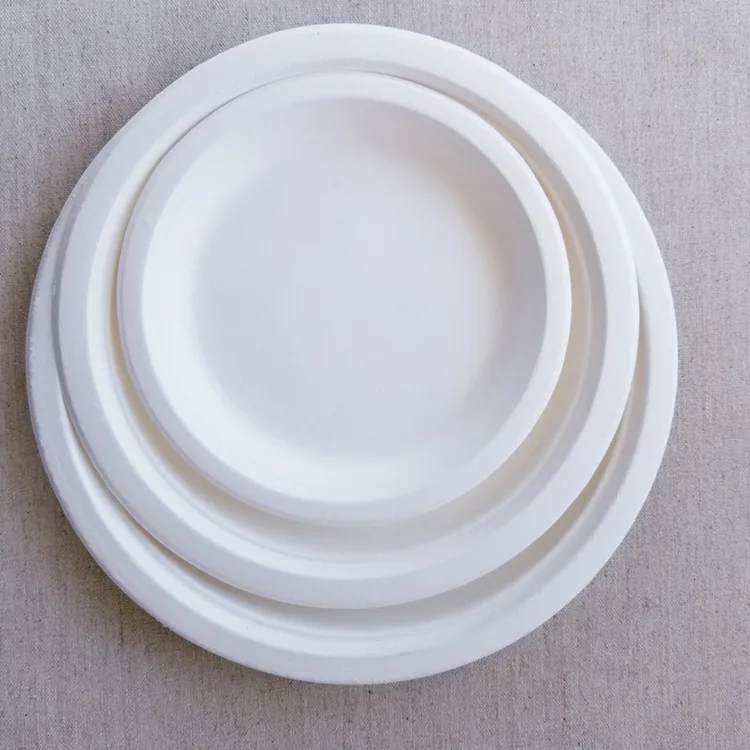7 Things You Should Not Do With Bagasse Plates
7 Things You Should Not Do With Bagasse Plates
Bagasse plates, derived from the fibrous residue of sugarcane stalks post juice extraction, have gained popularity as an eco-friendly alternative to traditional plastic and Styrofoam tableware. Their biodegradability, sturdiness, and heat resistance make them a preferred choice of compostable plates for environmentally conscious consumers and businesses. However, to maximize their benefits and ensure safety, it's crucial to understand their limitations. Here are seven practices to avoid when using bagasse plates:
1. Exposing Bagasse Plates to Prolonged Moisture
While bagasse plates are designed to handle moist foods, extended exposure to excessive moisture can compromise their structural integrity. Prolonged contact with liquids may cause the plates to weaken or become soggy, especially if the liquid is hot. A study published in the Journal of Food Science and Technology highlights that biodegradable materials like bagasse can absorb moisture over time, leading to a decline in mechanical strength. Therefore, it's advisable to serve liquid-based dishes promptly and avoid letting them sit for extended periods.
2. Using Bagasse Plates in High-Temperature Ovens
Bagasse plates exhibit commendable heat resistance, making them suitable for serving hot foods. However, subjecting them to high-temperature cooking appliances, such as conventional ovens or broilers, can lead to charring or combustion. Research indicates that while bagasse-based materials can withstand temperatures up to approximately 200°F (93°C), exposure to higher temperatures can compromise their structural integrity and safety. To ensure safe usage, it's best to avoid placing bagasse plates in ovens or under broilers.
3. Microwaving Bagasse Plates with High-Fat or High-Sugar Foods
Although bagasse plates are generally microwave-safe, caution is warranted when heating foods with high fat or sugar content. These substances can reach temperatures higher than the plate's tolerance, potentially causing the material to weaken or deform. The International Journal of Food Properties notes that fats and sugars can attain elevated temperatures during microwave heating, posing a risk to certain biodegradable materials. To mitigate this, use microwave-safe cookware for such foods and transfer them to bagasse plates afterward.
4. Storing Bagasse Plates in Humid Environments
Proper storage of bagasse plates is essential to maintain their durability and hygiene. Keeping them in humid or damp conditions can promote mold growth and degrade the material. A study on the storage of biodegradable materials emphasizes the importance of a dry environment to prevent microbial contamination and material deterioration. Store bagasse plates in a cool, dry place, away from direct sunlight and moisture sources, to preserve their quality.
5. Disposing of Bagasse Plates in Plastic Recycling Bins
Despite their eco-friendly nature, bagasse plates are not suitable for plastic recycling streams. Their organic composition requires different processing methods. The Environmental Science & Technology journal highlights that mixing biodegradable materials with traditional plastics can contaminate recycling processes. Instead, composting is the preferred disposal method. Bagasse plates are compostable and can break down into nutrient-rich compost under appropriate conditions, contributing positively to soil health.
6. Assuming All Bagasse Plates Are Free from Chemical Additives
While many bagasse plates are manufactured without harmful chemicals, some may contain additives to enhance water and oil resistance. A comprehensive review in the Journal of Agricultural and Food Chemistry points out that certain biodegradable food packaging materials may include chemical treatments that could pose health concerns. To ensure safety, it's essential to verify that the products are certified for food contact and free from harmful substances. Look for certifications or consult the manufacturer's specifications to make informed choices.
7. Using Bagasse Plates for Long-Term Food Storage
Bagasse plates are designed for immediate use and are not intended for long-term food storage, especially in refrigerators or freezers. Extended storage can lead to moisture absorption, compromising the plate's integrity and potentially affecting the food's quality. Research on biodegradable materials in food packaging suggests that prolonged exposure to cold and moist environments can alter the physical properties of materials like bagasse. For storing leftovers or meal prepping, opt for containers specifically designed for preservation.
Conclusion
Bagasse plates offer a sustainable and practical alternative to conventional disposable tableware. By understanding their limitations and proper usage, consumers can maximize their benefits while ensuring safety and durability. Avoiding the practices outlined above will help maintain the integrity of bagasse plates and support eco-friendly dining habits.


Comments